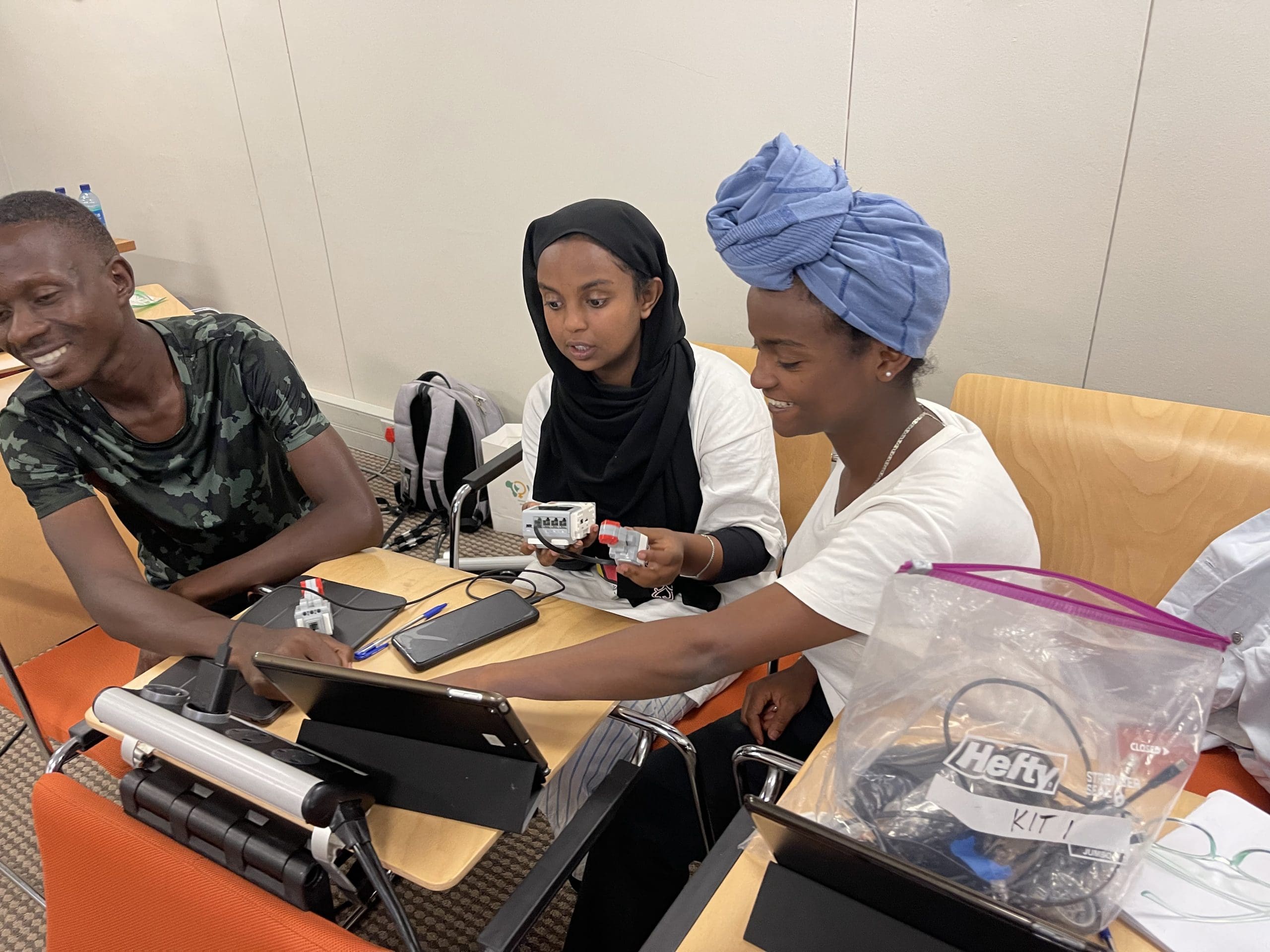Hands-on Learning in Africa and its Challenges
Hands-on learning is an educational approach that emphasizes learning by doing, rather than by listening or reading. It can foster creativity, problem-solving, collaboration, and critical thinking skills among learners. As a way of education, it is shown to be the natural way preschoolers learn, as it stimulates the growth of the brain. It is important that hands-on learning be introduced at every stage of learning.
Education in Africa
Education in Africa faces many challenges, with advancement in educational technology being one of the least of them, Over one-fifth of children between the ages of 6 and 11 are out of school, and nearly 60% of youth between the ages of about 15 and 17 are not in school, according to a report by UNESCO titled “Education in Africa.” Access to quality education remains uneven and insufficient for children and youth in many African countries.
How does hands-on learning supersede other forms of learning?
Hands-on learning is a form of learning that involves combining elements of visual and auditory learning with practical participation from a student in the form of movement. It has many benefits for students, such as:
- It improves intellectual skills by allowing learners to experiment through trial and error, and use critical thinking.
- It motivates students to participate actively in class and captures the interests of other learning styles.
- It allows for better retention of facts and information by engaging both sides of the brain.
- It provides an opportunity for self-reflection, life experiences, and the application of knowledge.
- It prepares students for their future careers by giving them a chance to practice the skills and processes they will need in a safe and controlled environment.
Why is hands-on learning not effectively introduced in Africa?
Many schools across Africa still rely on traditional learning methods such as copying notes, reading from textbooks, and lecturing. These learning methods do not allow for much practical interaction, engagement, or content sharing among students and teachers. Hands-on learning, on the other hand, requires more active participation and collaboration from the students, which engages them both visually and verbally . The implementation of interactive learning techniques (hands-on learning) across schools in Africa serves as the way forward in the development and growth of the educational sector, with its unlimited pros. However, the technologies are often expensive, unavailable, or unfamiliar to many African learners and teachers. Therefore, hands-on learning remains a challenge in Africa. Here are some reasons why hands-on learning is not readily introduced in Africa;
-
Lack of resources:
Many schools in Africa lack the basic infrastructure, equipment, materials, and textbooks that are needed for hands-on learning activities. For example, according to a UN report, the availability of good-quality textbooks was a bar to progress across sub-Saharan Africa.
-
Lack of teacher support:
Many teachers in Africa are not adequately trained or supported to implement hands-on learning methods. They may lack the pedagogical knowledge, confidence, motivation, or incentives to adopt new approaches. They may also face large class sizes, heavy workloads, and low salaries that limit their capacity to engage learners in hands-on learning. According to ADEA, a lack of proper teacher support is one of the key factors affecting teaching and learning in Africa.
-
Lack of alignment with curriculum and assessment:
The curriculum and assessment systems in many African countries are not aligned with the goals and principles of hands-on learning. They emphasize rote memorization, standardized testing, and academic subjects over practical skills, creativity, and innovation. This creates a mismatch between what learners are taught and what they are expected to demonstrate. Another issue is that teachers and learners shy away from adopting hands-on learning methods that are not rewarded or recognized by the system.
-
Lack of awareness and appreciation:
Many stakeholders in the education sector in Africa are not aware of the benefits and potential of hands-on learning for improving learning outcomes and skill development. They also have negative perceptions or attitudes towards hands-on learning, such as seeing it as a waste of time, a distraction from academic subjects, or a threat to cultural values. This hinders the adoption and support of hands-on learning initiatives by policymakers, administrators, parents, and communities.
How can Africa overcome these challenges
-
Providing adequate resources:
Schools need to be equipped with sufficient infrastructure, equipment, materials, and textbooks that enable hands-on learning activities. This entails mobilizing more funding, leveraging partnerships with private sector or civil society organizations, or using low-cost or locally available resources.
-
Providing adequate teacher support:
Teachers need to be trained and supported to implement hands-on learning methods effectively. This requires revising pre-service and in-service teacher education programs, providing teacher guides and manuals, creating professional development opportunities and networks, or offering incentives and recognition for teachers who adopt hands-on learning methods.
-
Aligning curriculum and assessment with hands-on learning:
The curriculum and assessment systems need to be revised and aligned with the goals and principles of hands-on learning. A way to go about this is by developing competency-based curricula that integrate practical skills, creativity, and innovation across subjects, designing alternative forms of assessment that capture learners’ progress and achievements in hands-on learning activities, or involving teachers and learners in curriculum development and assessment processes.
-
Raising awareness and appreciation of hands-on learning:
Stakeholders need to be informed and educated about the benefits and potential of hands-on learning for improving learning outcomes and skill development. By conducting advocacy campaigns, organizing workshops and seminars, showcasing best practices and success stories, or engaging parents and communities in hands-on learning initiatives, more people can be sold on the idea of hands-on learning.
Hands-on learning is a promising educational approach that can enhance the quality and relevance of education in Africa. The sector faces many challenges that need to be addressed by various contributors in the education sector. By providing adequate resources, teacher support, curriculum alignment, and awareness-raising, hands-on learning can be implemented more widely and effectively in Africa.
At the WAAW Foundation, our programs are integrated with interactive learning techniques to facilitate effective learning and retention. This includes our C2S outreach programs, the annual Fellows Summit, Equip a STEM Lab program, and Teachers training. You can encourage practical learning in Africa today by donating to one of our programs. Visit our website to learn more.


